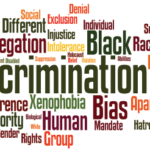Enter microinterventions. D.W. Sue talks about microinterventions as a potent strategy to address microaggressions.4 Microinterventions have four strategic goals: “1) make the invisible visible, 2) disarm the microaggression, 3) educate the perpetrator, and 4) seek external reinforcement or support.”
In my case, my microintervention was subtle and focused on making the invisible visible and disarming the microaggression. At the time, I was more concerned about finishing the encounter, so I kept it short.
But I could have picked a different strategy. I could have answered earnestly and explained, “My family moved to the States when I was 9.” Or I could have asked for clarification: “What do you mean by that?” I could have pulled a very satisfying Reverse Uno card, saying, “Your English is pretty good too!” I could even have bragged, saying, “If you like my spoken English, then you should read the magazine I edit!” Or I could have destigmatized multilingualism: “I can talk in Spanish or Hindi, if you’d like, instead.”
Some of my colleagues have been known to respond with, “The beautiful thing about English is that it can be spoken in many different ways.”
It seems like there’s no best practice for engaging in microinterventions, and certainly if microaggressions were to veer into verbal assault, I would be more assertive in pushing back. Conversely, if it looked like I were in danger, I would try to get out of the situation altogether.
Don’t Be a Bystander
And certainly, microinterventions don’t need to rest only on the recipient of a microaggression. Although many microaggressions, especially those with premeditated intention, are done away from the gaze of others, many other microaggressions occur in plain sight. If you witness such a microaggression, there’s no law stating that you should stay unengaged as a witness. Depending on the situation, you can be part of an active strategy to mitigate the effects of the microaggression.
As a resident physician, I had a patient tell me that I didn’t understand how things work in this country. My attending was in the room and let me respond diplomatically. Just after that, he stood up next to me and informed the patient that those words were inappropriate to say to anyone. He also went out of his way to document this interaction in the chart, anticipating future trouble. In retrospect, his actions were with good reason—the patient lodged a complaint, but the authorities quickly redirected once they understood the facts of the case.


